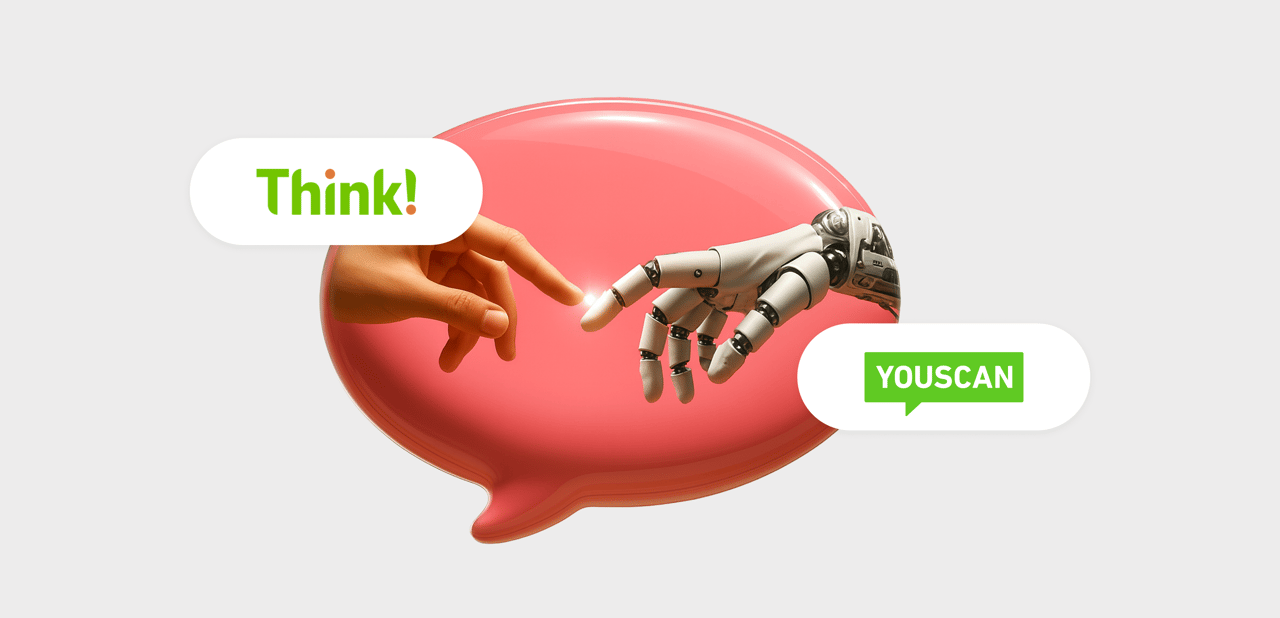Target Audience Analysis Explained: How to Understand Your Customers
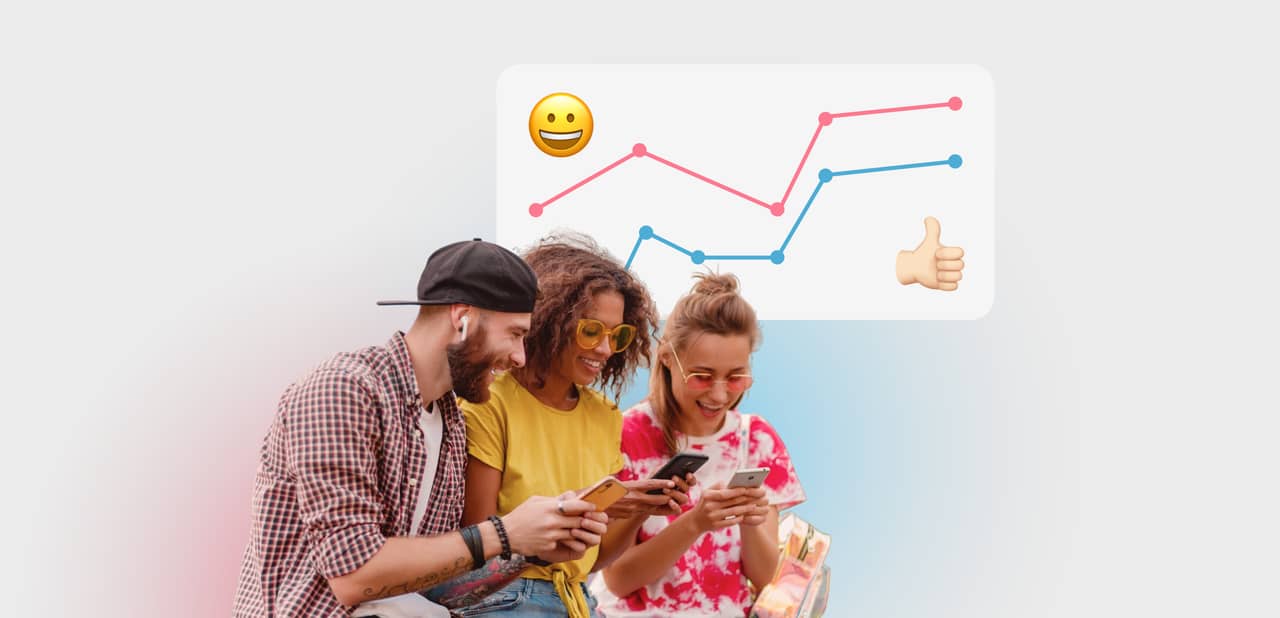
Ever feel like you're guessing what your customers want? You’re not alone.
Knowing your audience sounds simple, but actually understanding them — their behaviors, values, and daily decisions — takes more than a hunch and a demographic chart. That’s where target audience analysis comes in.
What is target audience analysis and why it matters
Target audience analysis is the process of getting to know the people you're trying to reach, not just by age or location, but by how they think, feel, act, and buy.
It’s foundational for everything from marketing campaigns to product development. Why? Because the better you understand your audience, the better you can create experiences, content, and products that actually resonate. It’s the difference between “we think this might work” and “we know this speaks to them.”
A good analysis goes beyond demographics. It uncovers behavior patterns, emotional drivers, and cultural context.
What values matter most to your customers? What kind of content grabs their attention? What do they expect from brands today? Once you have answered those questions, you stop guessing and start connecting.
Core elements of understanding your audience
To truly connect with your target audience, you need more than the name and job title of your potential customers. Here’s what target market research looks like in practice.
Demographics and psychographics
Start with the basics — demographics help you answer the “who.” Age, gender, income, education, and location give you a general map. For example, a skincare brand targeting urban Gen Z women will naturally focus on different social media platforms and language than one aimed at retired men in rural areas.
However, target audience demographics are just the tip of the iceberg.
Psychographics digs into the “why.” They reveal personality traits, values, interests, and lifestyle choices. Does your target audience care more about sustainability or status? Do they value convenience or craftsmanship? Are they impulsive buyers or meticulous researchers?
To conduct audience research, you can start by organizing focus groups or with a simple interview to get you going in the right direction.
Interview a few of your existing customers. Ask them what motivates their choices — not just why they chose your product, but how they shop, what they trust, and what they avoid. You’ll spot patterns you can’t get from data alone.
Moreover, you will discover how many different target audiences your brand speaks to. Based on different buyer personas, you will be able to create powerful marketing strategies that ensure every target audience is under your radar.
Behavioral patterns and purchase drivers
Zoom in on what your audience does. What platforms do they use daily? How do they interact with content? What makes them hit “buy now,” abandon their cart, or share a product with friends?
Understanding behavior means tracking how people engage — both online and offline. For example, a user might scroll past your Instagram post five times before finally clicking the link in the bio. Or maybe they prefer learning about new products through TikTok creators rather than traditional ads.
First things first: Map the customer journey. What are the typical touchpoints — awareness, consideration, decision — and where are users dropping off? Tools like heatmaps, Google Analytics, funnel breakdown, and even session recordings can reveal the hidden blockers.
Furthermore, a well-conducted competitive analysis can help a great deal in uncovering the areas for improvement. Keep an eye on your rivals: What do they do? Does it work for them? Why?
Sentiment and perception
How do people feel about your brand, your competitors, or your product category in general? Brand sentiment analysis isn’t just about collecting positive or negative mentions — it’s about capturing tone, emotion, and even sarcasm.
Let’s say you’re launching a new plant-based snack. Your audience might love the ingredients but find the packaging “too preachy.” That disconnect won’t show up in a sales chart — but it might surface in a meme, a tweet, or a Reddit thread.
This is where social listening becomes crucial. You’re not just monitoring mentions — you’re decoding mood, intent, and expectation.
Are you capturing how your audience feels, or just what they say? Sentiment analysis can fill that gap, especially when powered by AI that understands nuance, not just keywords.
Methods for conducting a target audience analysis
Target audience analysis relies heavily on how you create buyer personas for different target audiences and separate current and potential customers based on research and deeper insights.
Creating a buyer persona or audience segment is more than filling in a template. It’s about layering insights — some pulled from raw data, others from human conversations, digital footprints, or emotional responses. Each method contributes a different perspective.
Let’s walk through how these methods work together in real life using examples from our target audience.
Surveys and interviews
Effective audience analysis envisages live conversations with your intended audience. Surveys and interviews are where you hear it straight from the source.
Surveys give you quantifiable patterns. Interviews give you emotional depth. Both help uncover customer needs, frustrations, and priorities — often in their own words. You might learn that people don’t just want fast delivery, they want to avoid the anxiety of missed packages. Moreover, you'll learn what pains a specific target audience and craft a better approach to that specific group.
From a point of view of marketing efforts, you get direct language you can use in copywriting, common pain points, expectations, and motivations. User-generated contributions always contribute to a successful marketing strategy.
Pro tip: Always include open-ended questions — that’s where the real gold is.
Social media listening and digital behavior tracking
What people say in surveys is useful. But what do they say when they’re not being asked? That’s often even more revealing.
Social listening tools like YouScan track online conversations across platforms like Instagram, Reddit, TikTok, and Twitter. You can discover what customers complain about, celebrate, or joke about — in their natural environment. YouScan also helps analyze sentiment, detect emerging trends, and even recognize visual content (logos, objects, emotions) in user-generated media.
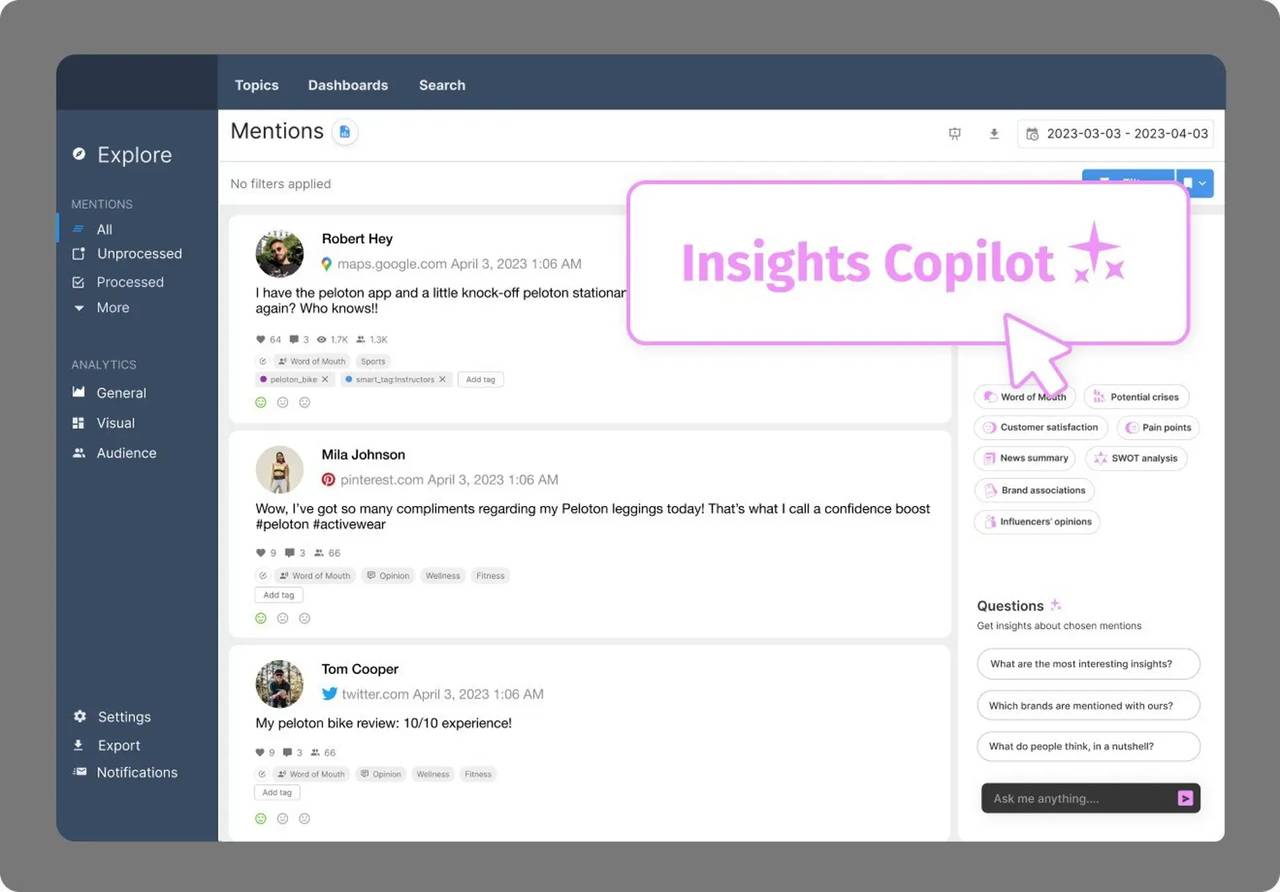

This type of direct audience insights that come from real-time, unfiltered opinions allows for targeted marketing campaigns and takes the concept of customer feedback to a whole new level. Mood tracking. Cultural context. Influencer and community mapping. Think of effective marketing campaigns offering relevant content to various customer segments.
Track not only mentions of your brand, but also of your category and competitors. That’s where emerging expectations show up first.


Web and product analytics
Every click tells a story. Tools like Google Analytics, product dashboards, and behavior heatmaps show how people navigate your site or product — what they search for, where they hesitate, when they bounce, and what converts them.
You might notice that mobile users drop off on your pricing page, or that your most loyal customers always explore a particular feature first.
From a large target market, by listening to valuable data, you get behavioral truth, an optimized marketing funnel, purchase intention, friction points, and conversion drivers. Overall, valuable insights help your sales team improve the buyer's journey and attract ideal customers.
But don’t just track what users do. Ask why they might be doing it, and tie it back to insights from interviews or social media. Deep understanding comes from combining data with the reason and emotions behind the customer's decision-making process.
Third-party audience intelligence tools
Third-party tools for target audience analysis are great when you need scale or want to zoom out. Consumer panels, media trend tools, and AI-driven profiling platforms help you understand things like:
What values does your audience hold?
Which media and digital channels do they consume?
How do they compare to other groups demographically or psychographically?
Small differences, such as your target customers' marital status, help you develop strategies for more personalized content and marketing messages that actually resonate. Don't just shoot in the dark. Create targeted ads for all buyer personas and make an effective marketing strategy.
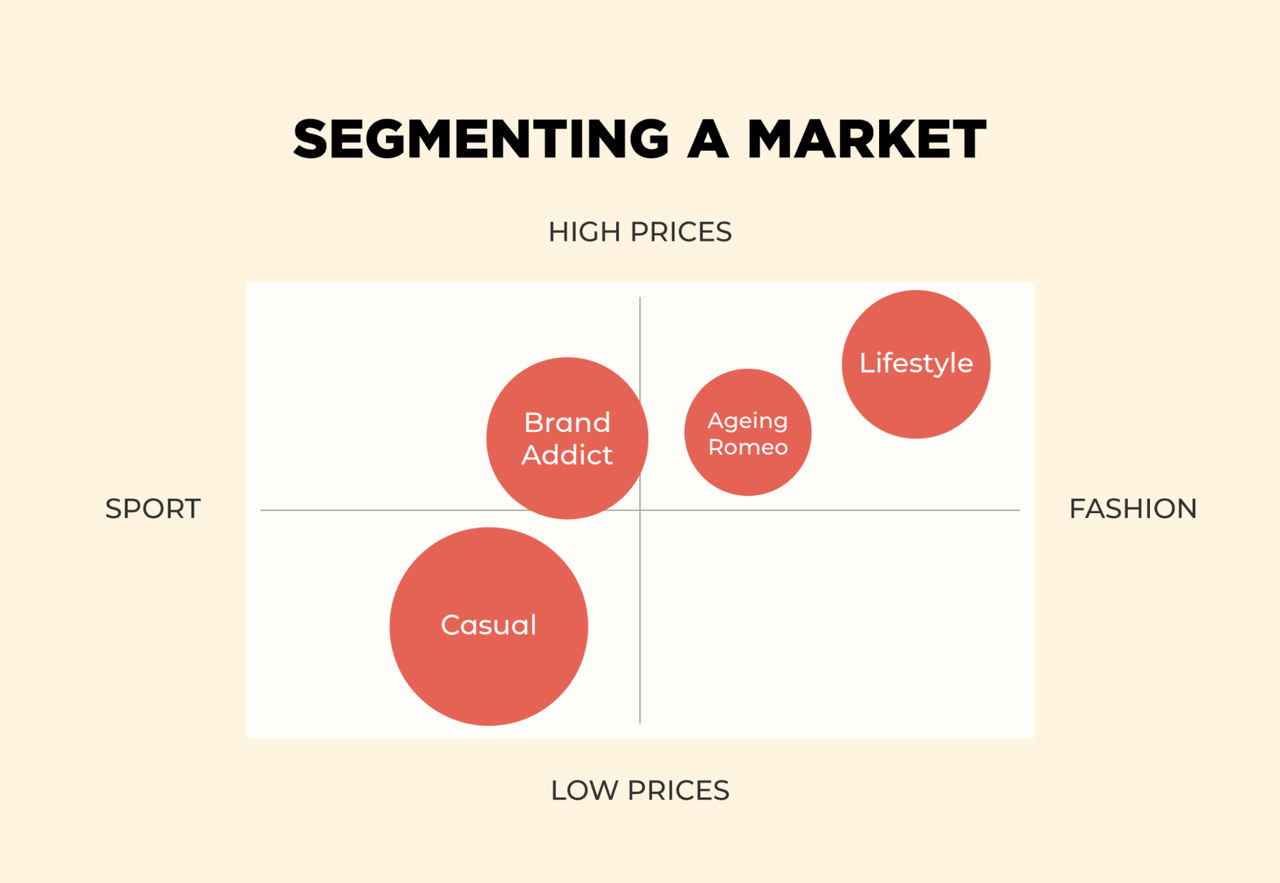

Source: Liquid creativity
So, why are the tools for audience analysis important? In short: Market positioning. Broader audience trends. Comparative benchmarks.
Use these insights to challenge your internal assumptions. Sometimes, the market knows more than your team does.
Putting it all together: What real audience understanding looks like
Let's say you're launching a sustainable beauty brand targeting Gen Z.
Your survey reveals that many customers prioritize ethical sourcing and cruelty-free products.
Through social listening on YouScan, you notice that the same audience mocks “greenwashing” and values transparency — they’re calling out brands with vague claims.
Your product analytics show that users engage heavily with your ingredient page but drop off when it’s too text-heavy.
And a third-party consumer trend report shows that Gen Z beauty buyers are 40% more likely to be influenced by creators who share “get ready with me” videos that feel raw, not polished.


Source: Dailymail
So instead of building a generic segment like “Gen Z women, 18–25,” you define a more insight-rich group: “Transparency-first shoppers who verify ethical claims, value eco-packaging, and trust low-fi beauty content from creators they identify with.”
Once you analyze data thoroughly, you can address concerns from your real target audience. Now you have a segment you can actually build campaigns, landing pages, and influencer partnerships.
How to create audience segments that actually work
Once you've gathered your data, the real work begins — turning those insights into audience segments you can actually use. And no, we’re not talking about vague labels like “Gen Z females” or “millennial moms.” Those are categories. Segments are something else entirely.
A good segment tells you not just who someone is, but what they care about, how they behave, and why they act the way they do.
Surface-level segments vs. actionable ones
“Gen Z females” is a surface-level group. It tells you age and gender, but nothing about values, purchase drivers, or behavior. It doesn’t answer:
Are they loyal to specific brands?
Do they care about sustainability?
Are they influenced by TikTok trends?
Are they bargain hunters or premium seekers?


Source: Independent
On the other hand, “Price-conscious Gen Z shoppers looking for ethical brands” is an actionable segment. It combines:
Demographics (Gen Z)
Psychographics (ethics-driven)
Behavioral traits (price sensitivity)
Channel preferences (often discovered through social listening)
This type of segment helps you make decisions: Which message will resonate? What product features should you emphasize? Where should you advertise?
How to build insight-driven market segments
Creating rich customer segments starts with blending different types of data:
Social listening tools like YouScan help uncover what your audience is talking about in real time. You can detect emotional tone, emerging values (e.g., sustainability, inclusivity), and even recognize visual trends like recurring aesthetics or popular unboxings.
Analytics platforms show you how people behave: who bounces after 5 seconds, who keeps reading, who shares what.
Support logs and reviews tell you what users struggle with, sometimes revealing whole new segment types you didn’t know existed (like “first-time users who need reassurance”).
Surveys and interviews dig into motivation and customer satisfaction. Why do they choose your brand? What made them hesitate?
You can then group users based on shared traits and shared intent. Maybe you end up with:
“Eco-conscious parents willing to pay more for safe materials”
“Young professionals seeking style + performance in one”
“Budget-driven buyers who want transparency before committing”
These aren't just audience profiles. They're marketing springboards. You can tailor messaging, offers, and even product lines to match what each segment actually wants.
Let’s say you're selling a line of ergonomic backpacks. Surface-level segments might give you “urban men aged 25–35.” But through social listening with YouScan, you notice a group repeatedly posting about back pain from bike commuting and praising brands with lifetime warranties. They’re tagging you — but also your competitors.
Pair that with your website data (they click most on sustainability pages but bounce on the pricing page) and CRM inputs (lots of chat requests asking if straps are adjustable).
Now you’ve got a new, more precise segment: “Sustainability-minded urban commuters seeking ergonomic gear with long-term value.”
That’s not just a label. That’s a roadmap for how to win them over.
Common challenges in audience analysis and how to overcome them
Audience analysis sounds clean and data-driven on paper, but it’s often anything but. Between messy data, fast-changing behaviors, and internal assumptions, even the most well-intentioned efforts can go off track.
Let’s break down a few of the most common challenges and how to stay ahead.
The data is messy (and incomplete) — Don’t expect perfect data. Instead, aim for coverage. Mix qualitative feedback (like social sentiment or interviews) with quantitative metrics (like churn or time-on-site).
Consumer behavior changes fast — What worked last quarter might already be outdated. Build regular audience reviews into your workflow. Use social media monitoring tools to spot shifts in sentiment, values, and topics as they happen.
Assumptions vs. reality — Personas based on guesswork don’t hold up. Validate everything. Compare what you think you know with what users are actually saying and doing. Bring in insights from marketing, product, and support teams.
Outdated segments stick around — If a segment of a particular group in the existing customer base no longer leads to meaningful decisions, it’s dead weight. Review segments often. YouScan’s smart segmentation helps you discover new clusters based on real-time data and behavior, beyond just demographic information.
Final thoughts on audience analysis in a fast-changing world
Audience analysis is an ongoing habit that helps your brand stay relevant and genuinely connected to the people you’re trying to reach. As behaviors shift and new trends emerge, the brands that listen continuously are the ones that stay ahead.
Today’s tools make that easier. With AI, social listening, and predictive modeling, you don’t have to rely on static personas or outdated segments. Platforms like YouScan help you tap into real-time conversations, detect emotional tone, and uncover the insights that truly move the needle.
Curious what this looks like in action? Get a live demo and see how YouScan turns raw social data into a clear understanding of your audience — and a smarter path forward.
FAQs
What is the target audience analysis method?
Target audience analysis is a process of gathering and interpreting data to understand who your audience is, what they care about, and how they behave, so you can tailor your messaging and strategy effectively.
What are the three 3 types of audience analysis?
The three main types of audience analysis are demographic data analysis (age, gender, income), psychographic (values, interests, lifestyle), and behavioral (purchase habits, engagement patterns).
What are the 5 aspects of audience analysis?
Key aspects of audience analysis include demographics, psychographics, behaviors, communication preferences, and emotional drivers.
What are the four key ways to identify a target audience?
You can identify your audience through market research, customer interviews, social listening, and analysis of website or product usage data. On top of that, you can gain insights through competitor analysis, gather data from social media such as your Facebook audiences, and map key influencers to gain a comprehensive understanding of the entire market landscape.

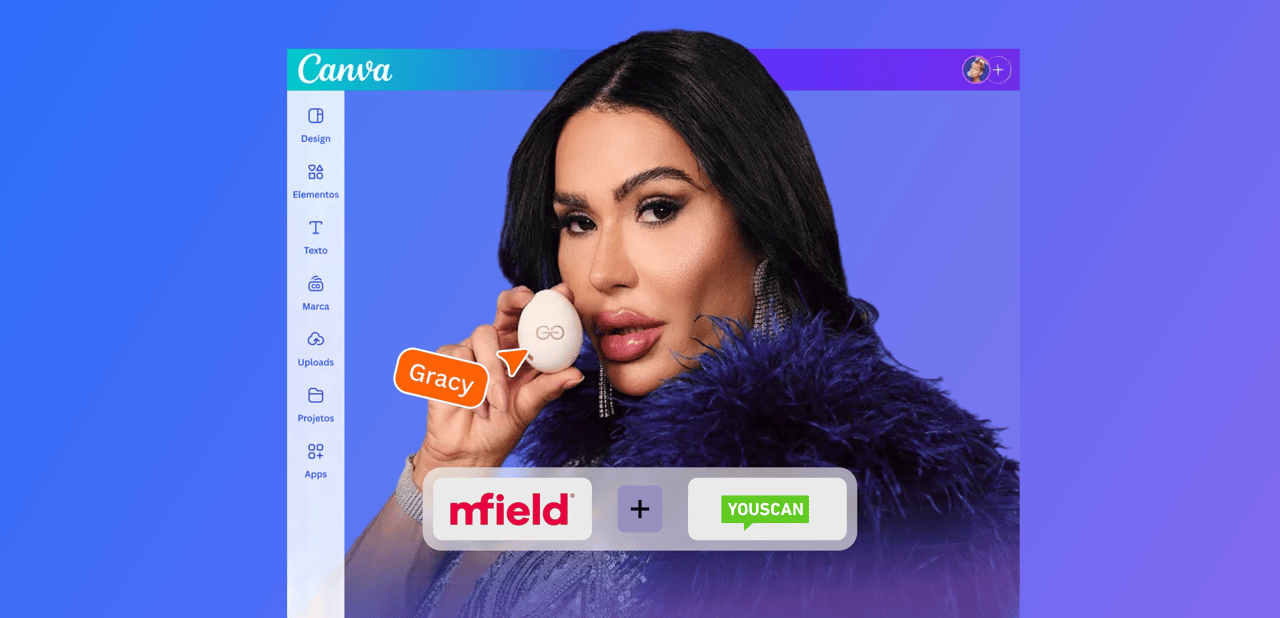
.png)
